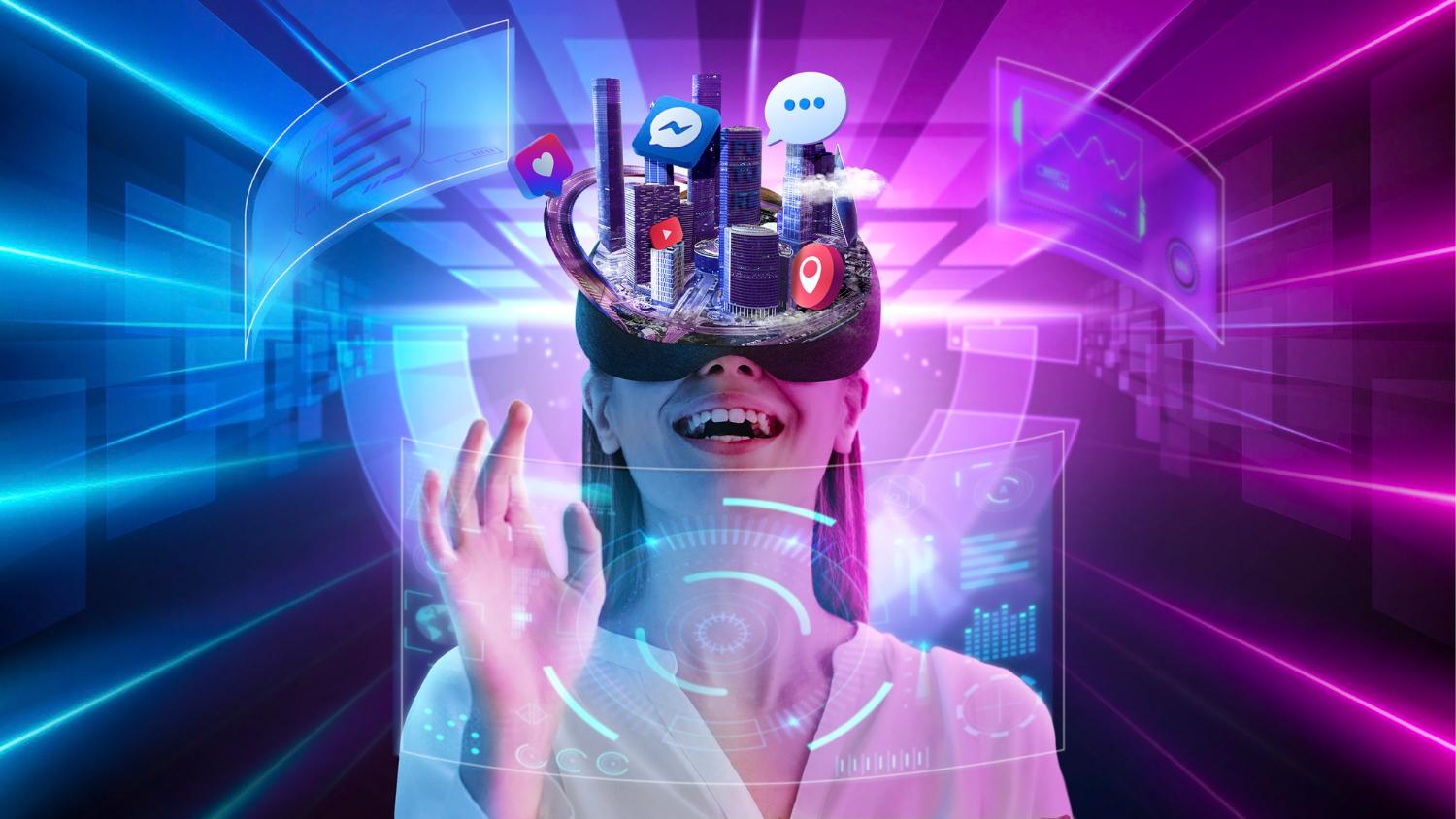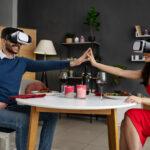Introduction:
Augmented Reality (AR) is a revolutionary technology that blends the virtual world with our physical reality, transforming how we interact with information and our surroundings. By overlaying digital content onto the real world, AR provides captivating and immersive experiences across various sectors. From entertainment and education to healthcare and manufacturing, AR has revolutionized the way we perceive and engage with the world. In this comprehensive guide, we will explore the intricacies of augmented reality, its applications across industries, and the ways it enhances real-world experiences.
1. Understanding Augmented Reality
Augmented Reality is a technology that enriches the real world by superimposing computer-generated content onto our physical environment. Unlike Virtual Reality (VR), which creates an entirely digital experience, AR enhances the real world with interactive and dynamic virtual elements. AR operates through devices such as smartphones, tablets, and AR glasses, using built-in cameras and sensors to detect and interpret the environment. This enables AR to overlay digital objects, graphics, and animations seamlessly onto the physical world.
The core components of AR technology include computer vision, which allows devices to recognize and track objects in real-time, and spatial mapping, which enables accurate placement of virtual content. Moreover, AR applications often employ marker-based and markerless tracking systems to anchor virtual elements to specific physical objects or locations.
2. The Evolution of Augmented Reality
The concept of augmented reality dates back to the 1960s, but it wasn’t until the late 20th century that significant advancements were made. One of the earliest AR systems was developed at the U.S. Air Force’s Armstrong Laboratory in 1992, focusing on training and maintenance applications. Over the years, AR evolved, with the first AR application, “ARToolKit,” introduced by Hirokazu Kato in 1999. This open-source software paved the way for further research and development in AR.
The breakthrough moment for AR came with the advent of smartphones and their advanced sensors and processing capabilities. In 2009, Layar, one of the first commercial AR platforms, brought AR experiences to mobile devices. The release of Google’s ARCore and Apple’s ARKit in 2017 marked another milestone, making AR accessible to a broader audience.
Today, AR is a thriving industry, with applications spanning from gaming and entertainment to practical use cases in various fields like healthcare, education, retail, and more.
3. AR Technologies and Devices
AR technology encompasses various techniques, each catering to specific AR experiences. Marker-based AR relies on visual markers, such as QR codes or fiducial markers, to anchor virtual content to physical objects. Markerless AR, on the other hand, uses computer vision algorithms to identify and track features in the environment, enabling AR experiences without markers.
SLAM (Simultaneous Localization and Mapping) is a vital technology that enables AR devices to understand their position and orientation in the world while mapping the surrounding environment. SLAM is particularly essential for AR glasses and headsets, providing a seamless and immersive experience.
AR devices range from widely available smartphones and tablets, which use their cameras and processing power for AR experiences, to dedicated AR glasses and headsets, such as Microsoft’s HoloLens and Magic Leap’s One, designed explicitly for extended AR applications.
4. Applications of AR Across Industries
AR has found diverse applications across a wide range of industries, transforming the way we interact with information, products, and our surroundings.
In the field of education, AR offers interactive and engaging learning experiences. AR-powered textbooks and educational apps bring static content to life, providing students with a deeper understanding of complex subjects through visualizations and simulations. For instance, AR can enable students to explore the solar system or dissect virtual organisms in a biology class.
Healthcare has embraced AR to enhance medical training and improve patient care. Surgeons can use AR to overlay critical data, such as CT scans or X-rays, onto a patient during surgery, providing real-time guidance. AR can also assist medical professionals in understanding complex anatomical structures and medical procedures.
The retail industry has leveraged AR to revolutionize the way consumers shop. Virtual try-on applications allow customers to see how clothing or accessories look on them without physically trying them on. AR-powered visualizations help customers visualize furniture and home décor items in their living spaces before making a purchase.
AR has also found extensive applications in entertainment and gaming, blurring the lines between the virtual and real worlds. AR games, such as Pokemon Go, enable players to interact with virtual characters and objects within their physical environment, encouraging physical activity and exploration.
5. Augmented Reality in Training and Simulation
AR has become an indispensable tool for training and simulation across various industries. In the corporate world, AR facilitates employee training, allowing workers to practice tasks in a simulated environment before engaging in real-world scenarios. This approach is particularly valuable in high-risk professions like aviation, where pilots can simulate flight procedures and emergency situations.
In the military and defense sectors, AR enables realistic training exercises for soldiers without exposing them to actual combat situations. AR simulation scenarios provide military personnel with valuable experience and preparedness for real-world challenges.
6. The Impact of AR on Social Interaction
AR has significantly impacted how people interact with each other, especially in the context of social media and online communication. AR filters and effects on platforms like Snapchat and Instagram have become immensely popular, allowing users to add fun and engaging elements to their photos and videos. Shared AR experiences, where multiple users can interact with the same virtual content in real-time, have also fostered new forms of social interaction and collaboration.
7. Challenges and Future of Augmented Reality
While AR holds tremendous promise, it also faces challenges that must be addressed to unlock its full potential. Technical challenges include improving the accuracy and reliability of AR tracking systems, reducing latency for seamless experiences, and enhancing the field of view for AR glasses. Additionally, creating compelling and valuable AR content remains a challenge, requiring innovative and engaging experiences to drive user adoption.
AR also raises privacy and ethical concerns, as it blurs the boundaries between the digital and physical worlds. Safeguarding user data and ensuring ethical use of AR technology are essential considerations.
Looking to the future, AR is poised for continued growth and advancement. As hardware becomes more powerful and affordable, AR devices will become more accessible to a broader audience. Moreover, advances in content creation tools and AR development platforms will empower creators to build even more immersive and interactive AR experiences.
Conclusion
Augmented Reality has transformed the way we interact with the world, enriching our real-world experiences with virtual elements. From education and healthcare to entertainment and retail, AR has found diverse applications that enhance our understanding, engagement, and interaction with the physical world. As technology continues to evolve, AR’s potential is limitless, promising a future where augmented reality becomes an integral part of our daily lives. As we embark on this exciting journey, it is crucial to address challenges and ethical considerations while embracing the opportunities that AR presents. Augmented Reality holds the key to a more connected, informative, and immersive world, one that will shape the way we perceive and interact with our reality for generations to come.





